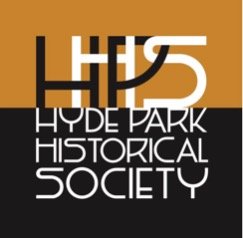Fountain of Time (George Washington Park)
6000 S Cottage Grove Ave, Chicago, IL 60637
The Fountain of Time is an allegorical sculpture located at the entrance of Washington Park and the western end of Midway Plaisance. This piece was created by Lorado Taft (1860-1936), sculptor and educator at the Art Institute of Chicago, to commemorate 100 years of peace (notice the 100 figures passing in front of Father Time) after the War of 1812 between England and the United States. The sculpture represents young figures falling and love and going to war, and also older figures descending into the ground. It is an allegory for us passing through time, rather than time passing us as the Father Time figure stands and watches this entire process happen.
The Fountain of Time is a large concrete sculpture, known to be one of the first of this kind. It was created as part of a beautification project and to memorialize the 100th anniversary of The Treaty of Ghent (1814). The sculpture, however, was not completed until 1920 and the fountain's water started running in 1922. The Fountain of Time was funded by Benjamin Ferguson’s Trust Fund. Taft was inspired by the poem “The Paradox of Time” by Henry Austin Dobson in creating the masterpiece [see poem below].
Lorado Taft was a prominent sculptor in Chicago who created large-scale public sculptures. His most famous work includes a sculpture at the World’s Columbian Exposition in 1893, The Columbus Fountain in DC, The Fountain of Great Lakes in Chicago, and Alma Mater in Urbana. Taft was also a prolific writer and author. His most famous publication is The History of American Sculpture.
The Paradox Of Time
by Henry Austin Dobson
Time goes, you say? Ah no!
Alas, Time stays, we go;
Or else, were this not so,
What need to chain the hours,
For Youth were always ours?
Time goes, you say?—ah no!
Ours is the eyes' deceit
Of men whose flying feet
Lead through some landscape low;
We pass, and think we see
The earth's fixed surface flee:—
Alas, Time stays,—we go!
Once in the days of old,
Your locks were curling gold,
And mine had shamed the crow.
Now, in the self-same stage,
We've reached the silver age;
Time goes, you say?—ah no!
Once, when my voice was strong,
I filled the woods with song
To praise your "rose" and "snow";
My bird, that sang, is dead;
Where are your roses fled?
Alas, Time stays,—we go!
See, in what traversed ways,
What backward Fate delays
The hopes we used to know;
Where are our old desires?—
Ah, where those vanished fires?
Time goes, you say?—ah no!
How far, how far, O Sweet,
The past behind our feet
Lies in the even-glow!
Now, on the forward way,
Let us fold hands, and pray;
Alas, Time stays,—we go!
Videos (Pre-Field Trip Prep):
The University of Illinois Urbana Champaign: “Illinois Icons: Lorado Taft”
https://www.youtube.com/watch?v=R170kCtlnWM&ab_channel=UniversityofIllinoisUrbana-Champaign
Minutes 7:48-end covers the Fountain of Time.
Drone Video: Fountain of Time - Chicago Washington Park - Midway Plaisance - Lorado Taft Sculptor
https://www.youtube.com/watch?v=bOLzAvTaGFs&ab_channel=Devodare_Chicago
Questions for Discussion:
What do you think this sculpture’s message is?
How do you imagine this sculpture was created?
How do you feel seeing this huge sculpture? How do you imagine others interact with it?
Why do we create public art?
Would this be better suited in a museum facility? Or are there benefits of outdoor art?
Suggested Activities:
Poetry Reading & Analysis
Since this statue is based on a poem, it is imperative to introduce students to this poem. Students can read this poem before the field trip, and a poetry reading can be done again at the location. Then, students can take their time to work out stanza by stanza what the poem could mean and how it connects to the statue. It is important to spend at least 15-20 minutes on this activity, since the poem and the sculpture together work as a primary source of analysis and allow students to be introduced to art analysis as well.
Draw it Out!
Alternatively, students may want to sketch out the sculpture. It is a complex work of art and will require students to take time on this project, perhaps completing it in class after the trip. They might also want to return to the location with their parents to see the sculpture one more time.
Find Taft!
Lorado Taft has created a self-depiction in the sculpture. Show your students a photo of Taft and let them find the self-depiction.
Walking Tour Script:
Further Resources:
Encyclopedia of Chicago: “Lorado Taft and Chicago Sculpture”





